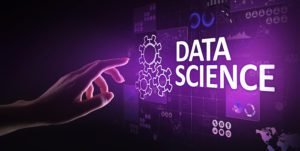Last updated on April 1st, 2024 at 09:55 am
Hypothesis testing is a critical component of the scientific method used to verify or reject a claim. In statistics, hypothesis testing concludes data and determines whether the results are significant. The hypothesis testing procedure involves making assumptions, collecting data, and comparing the results to your initial hypothesis. This post will explore the role of hypothesis testing in statistics and how you can use it to help make informed decisions.
Introduction to Hypothesis Testing in Statistics
In hypothesis testing, we are interested in using data to conclude population parameters. The goal is to choose the correct statistical model and then use it to make inferences about the population. Statistical inference uses data from a sample to make estimates or predictions about a population.
There are two types of statistical inference: point estimation and hypothesis testing. Point estimation estimates a single value, such as the mean or median, while hypothesis testing tests for a difference between two values, such as the means of two groups.
In hypothesis testing, we start with null and alternative hypotheses. The null hypothesis claims no difference between the two values, while the alternative hypothesis claims that there is a difference. We then use statistical tests to decide which hypothesis is more likely to be true given the data.
Null and Alternative Hypotheses
In hypothesis testing, the null hypothesis (H0) represents the status quo or the default assumption that there is no relationship between variables. The null hypothesis states that two groups or data sets are equal or do not differ.
The alternative hypothesis (Ha or H1) represents the claim or theory being tested and is the opposite of the null hypothesis. It states that there is a difference or a relationship between variables.
For example, an alternative hypothesis might state that the mean of a particular population is not equal to a specific value or that there is a difference in the proportion of individuals with a particular trait between two groups.
Steps of Hypothesis Testing
The steps of hypothesis testing include the following:
- Formulate the null and alternative hypotheses: This step involves stating the claim or theory tested in the form of a null hypothesis (H0) and an alternative hypothesis (Ha or H1).
- Select a sample and collect data: A sample gets selected from the population, and data is collected.
- Choose a level of significance: The level of significance, or alpha level, is the likelihood that the null hypothesis will be accepted even if it is true. Common values for the level of significance include 0.05 and 0.01.
- Calculate the test statistic: The test statistic is a value calculated from the sample data used to decide on the null hypothesis. Different types of tests use additional test statistics.
- Make a decision: The test statistic gets compared to a critical value determined by the significance level. The null hypothesis gets rejected if the test statistic exceeds the critical value. The null hypothesis is not rejected if the test statistic is less than the necessary value or equal to it.
- Interpret the results and conclude: The final step is to interpret the results and draw a conclusion based on the decision made in step 5. If the null hypothesis is rejected, the conclusion is that there is enough evidence to support the alternative hypothesis. If the null hypothesis is not denied, the decision is that there is not enough evidence to support the alternative hypothesis.
Explore IIT Roorkee data science online course with Imarticus Learning.

Want to take your machine-learning skills to the next level? The IIT Roorkee data science and machine learning course is here!
Start your journey with IIT Roorkee’s iHUB Divya Sampark! Our acclaimed faculty members will help you build on the fundamentals while teaching key concepts like mining tools and how to use insights that drive real-world solutions through Python programming.
Course Benefits For Learners:
- Learn from acclaimed IIT faculty in this machine learning certification course, and get a unique insight into India’s vibrant industry.
- Learn the fundamentals of Artificial Intelligence, Data Science, and Machine Learning to develop skills that impact today and the future.
- Give yourself a career advantage with our data science online training – where you will gain an understanding of cutting-edge technology that will open up extraordinary opportunities.

